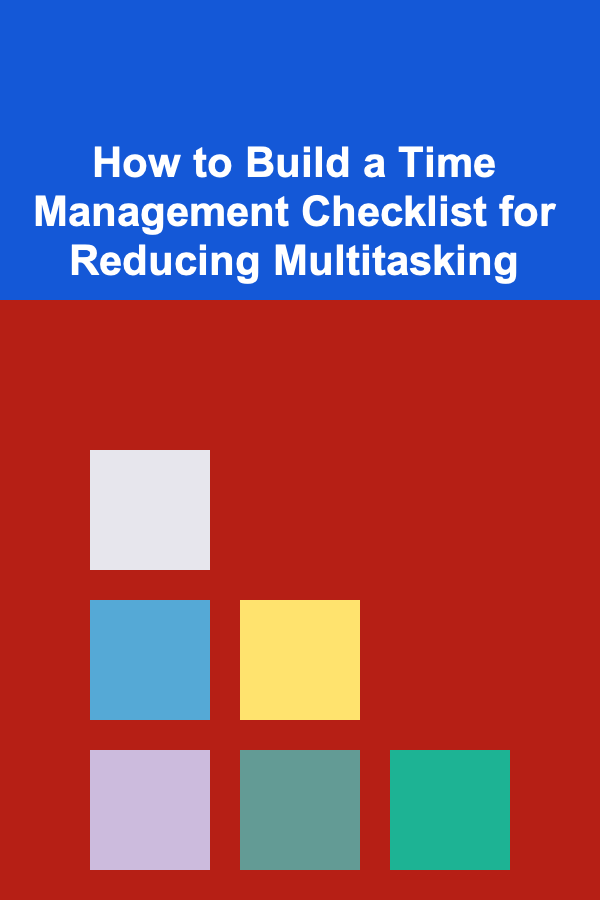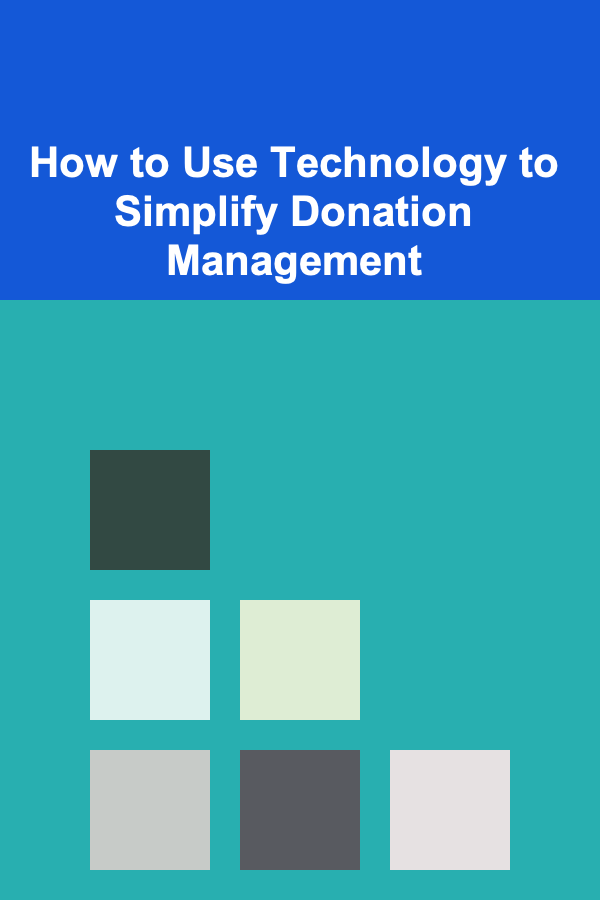
How to Build a Job Interview Checklist for Dressing Appropriately
ebook include PDF & Audio bundle (Micro Guide)
$12.99$9.99
Limited Time Offer! Order within the next:

Dressing appropriately for a job interview can make a significant difference in how you are perceived by potential employers. The right attire reflects your professionalism, attention to detail, and understanding of the company culture. However, dressing appropriately for an interview is not a one-size-fits-all process; it requires careful consideration of various factors, such as the industry, company, position, and even the season.
In this actionable guide, we'll explore how to build a job interview checklist that ensures you dress appropriately for any interview. The goal is to help you make a positive first impression and increase your chances of success.
1. Understand the Company Culture
Before even considering what to wear, it's essential to understand the company's culture. Every organization has its own norms and expectations when it comes to dress code. Some industries, like finance and law, tend to be more formal, while others, like tech or creative fields, may lean towards more casual or trendy attire.
How to Assess Company Culture:
- Research the Company: Visit the company's website and look for any information regarding dress code or workplace culture. Sometimes, this information is available on their "Careers" or "About Us" page.
- Check Social Media: Look at the company's social media profiles. This can give you a sense of the work environment and how employees present themselves.
- Ask a Current or Former Employee: If possible, reach out to someone within your network who works (or worked) at the company. Ask them about the company's dress code or how employees typically dress for interviews.
- Glassdoor: Browse through reviews on Glassdoor. Employees sometimes mention the company's dress code or the interview process, which can help guide your attire decision.
2. Consider the Industry Standard
Different industries have distinct expectations when it comes to professional attire. Here's a quick breakdown of what you might expect in various fields:
- Corporate/Finance/Banking/Law: Business formal attire is generally expected. Think tailored suits, dress shirts, ties for men, and business suits or professional dresses for women.
- Technology/Startups: While many tech companies have a casual or business casual dress code, it's still important to look polished. A nice pair of slacks, a clean button-down shirt or blouse, and neat shoes are typically appropriate.
- Creative/Design/Advertising: Creative industries often allow for more expression in clothing. However, this doesn't mean casual; it means stylish yet professional. A modern blazer, well-fitting pants, or creative dresses may be suitable here.
- Retail/Customer Service: Depending on the role and the company, business casual is often a safe bet. This might mean slacks or a knee-length skirt paired with a button-up shirt or a professional blouse.
- Healthcare: For medical or healthcare positions, attire may vary based on whether you're interviewing for a clinical or administrative role. For clinical roles, business casual or scrubs might be appropriate, whereas administrative positions may require more formal attire.
3. Check the Job Description
In many job postings, employers include information about the dress code or how to present oneself. Look for phrases such as "business attire," "business casual," or "dress code flexible." These details can guide your decision-making process.
4. Build a Checklist for Your Interview Attire
Now that you have a general understanding of the company culture and industry expectations, you can begin creating a personalized checklist to ensure you're dressed appropriately for the interview. Here's a practical checklist to consider:
A. Clothing
- Suit or Blazer: For formal industries, a well-tailored suit is essential. For business casual roles, a blazer paired with dress slacks or a skirt may suffice. Avoid overly casual attire like hoodies or t-shirts unless the company is extremely laid-back.
- Shirts/Blouses: Opt for a dress shirt or blouse in neutral or conservative colors like white, light blue, or soft pastels. Avoid loud patterns unless you're in a creative industry where bold styles may be welcomed.
- Pants or Skirts: Choose pants or skirts that are well-fitted and appropriate for the company. In more formal industries, opt for trousers or a knee-length pencil skirt. In casual settings, you might consider chinos or a well-tailored skirt.
- Dress or Jumpsuit: For women, a well-fitted, knee-length dress or professional jumpsuit can make a great statement. Avoid dresses that are too short, too tight, or too revealing.
- Shoes: Wear clean, polished shoes that complement your attire. In formal settings, closed-toe leather shoes or heels are ideal. In more casual settings, loafers, flats, or dress boots can work well.
- Outerwear: If the weather calls for it, a well-structured coat or jacket adds a layer of professionalism. Choose a neutral color, and avoid anything too bulky or casual, like a puffer jacket.
B. Accessories
- Belt: If your outfit includes pants or a skirt with belt loops, wear a belt that matches your shoes and overall look. Avoid flashy or overly large belts.
- Watch: A subtle, professional watch can be a great accessory. Avoid overly casual or oversized timepieces.
- Jewelry: Keep jewelry minimal and simple. Avoid large, dangling earrings or chunky necklaces. Opt for stud earrings, a simple bracelet, or a discreet necklace.
- Bag/Briefcase: Carry a clean, professional-looking bag. A leather briefcase or tote bag works well for both men and women. Avoid backpacks or overly casual bags unless specified by the company.
- Eyewear: If you wear glasses, ensure they are clean and not too flashy. Simple, neutral-colored frames are preferable.
C. Grooming and Personal Care
- Hair: Ensure your hair is neat, clean, and styled in a professional manner. Avoid overly messy or unkempt hairstyles, and consider a simple style that you can easily maintain during the interview.
- Nails: Keep your nails trimmed and clean. If you wear nail polish, choose neutral or subdued shades, and avoid overly bright or chipped polish.
- Skin: Take care of your skin by washing your face and moisturizing before the interview. Avoid heavy makeup or overpowering fragrances---subtlety is key.
- Facial Hair: If you have facial hair, ensure it is well-trimmed and groomed. Unkempt facial hair can give off a sloppy or unprofessional impression.
5. Test Your Outfit in Advance
Once you've chosen your interview attire, it's important to try it on in advance. This gives you the chance to check for any issues that may arise, such as:
- Fit and Comfort: Ensure that your clothes fit well and are comfortable to wear for extended periods. You don't want to be adjusting your outfit or feeling uncomfortable during the interview.
- Wrinkles and Stains: Check for any wrinkles, stains, or loose threads. Make sure everything is clean and pressed, and if necessary, use a lint roller to remove any pet hair or debris.
- Movement and Flexibility: Practice sitting, standing, and moving in your outfit. You want to make sure that you are not restricted in any way that could affect your performance or confidence during the interview.
6. Final Tips to Ensure Success
- Avoid Overdressing or Underdressing: While it's better to be slightly overdressed than underdressed, try to align your outfit with the company's expectations. You don't want to show up in a full suit if the company has a laid-back dress code, nor do you want to show up in casual wear if the company expects a professional appearance.
- Arrive Well Groomed: First impressions count, and grooming plays a key role in how you are perceived. Take the time to make sure your appearance is tidy, your clothes are clean, and your overall look is polished.
- Confidence is Key: Dressing appropriately is only part of the equation. Walk into your interview with confidence, knowing that your attire complements your qualifications and abilities.
Conclusion
Building a job interview checklist for dressing appropriately is an essential step toward making a great first impression. By considering factors such as company culture, industry standards, and personal grooming, you can ensure that you are dressed to impress. Remember that your outfit should reflect professionalism, respect for the company, and your awareness of the interview context.
By following these actionable steps, you can walk into any interview with the confidence that your appearance will enhance your chances of success, setting the stage for a productive conversation about your skills and qualifications.

How to Build a Time Management Checklist for Reducing Multitasking
Read More
How to Create a System for Shared Laundry Use
Read More
How to Establish a System for Returning Items to Friends
Read More
How to Evaluate Dropshipping Suppliers Based on Quality and Price
Read More
How to Help Businesses Implement New Software Systems: An Actionable Guide
Read More
How to Use Technology to Simplify Donation Management
Read MoreOther Products

How to Build a Time Management Checklist for Reducing Multitasking
Read More
How to Create a System for Shared Laundry Use
Read More
How to Establish a System for Returning Items to Friends
Read More
How to Evaluate Dropshipping Suppliers Based on Quality and Price
Read More
How to Help Businesses Implement New Software Systems: An Actionable Guide
Read More